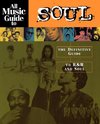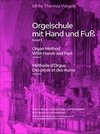
Turkish music
Source: Wikipedia. Pages: 53. Chapters: Turkish hip hop, Music of Turkey, Kemenche, Manga, Kurdish music, List of makams, Music of Thrace, Ottoman military band, Kanto, Ottoman classical music, Turkish pop music, Sari Gelin, Turkish folk music, Turkish State... Viac o knihe
Produkt je dočasne nedostupný
17.78 €
bežná cena: 20.20 €
O knihe
Source: Wikipedia. Pages: 53. Chapters: Turkish hip hop, Music of Turkey, Kemenche, Manga, Kurdish music, List of makams, Music of Thrace, Ottoman military band, Kanto, Ottoman classical music, Turkish pop music, Sari Gelin, Turkish folk music, Turkish State Opera and Ballet, Ashik, Arabesque, Anatolian rock, Cümbüs, Eski Ordu Marsi, Usul, Oni Wytars, Pesrev, Türkiye Top 20, Müyorbir, Khigga, Yalli, Karsilama, Turkish airplay chart, Özsoy, Bozlak, Plevna March, Cocek, Fasil, Lavta, Saz semai, A Ballad for Chanakkale, Samanyolu, Zeybek dance, Çiftetelli, Beste, Türkü, Taqsim, Gazel, Istancool, Longa, Sama'i, MTV Europe Music Award for Best Turkish Act, Yürük semai, Hicaz Hümâyun Saz Semâisi, Turkish musical instruments, Anadolu Pop, Misket, Teslim, Sarki. Excerpt: The music of Turkey includes diverse elements ranging from Central Asian folk music and has many copies and references of Byzantine music, Greek music, Ottoman music, Persian music, Balkan music, as well as more modern European and American popular music influences. Turkey is a country on the eastern shore of the Mediterranean Sea, and is a crossroad of cultures from across Europe, North Africa, the Middle East, the Caucasus and South and Central Asia. The roots of traditional music in Turkey spans across centuries to a time when the Seljuk Turks colonized Anatolia and Persia in the 11th century and contains elements of both Turkic and pre-Turkic influences. Much of its modern popular music can trace its roots to the emergence in the early 1930s drive for Westernization. With the assimilation of immigrants from various regions the diversity of musical genres and musical instrumentation also expanded. Turkey has also seen documented folk music and recorded popular music produced in the ethnic styles of Greek, Armenian, Music of Albania, Polish, Azeri and Jewish communities, among others. Many Turkish cities and towns have vibrant local music scenes which, in turn, support a number of regional musical styles. Despite this however, western-style pop music lost popularity to arabesque in the late 70s and 80s, with even its greatest proponents Ajda Pekkan and Sezen Aksu falling in status. It became popular again by the beginning of the 1990s, as a result of an opening economy and society. With the support of Aksu, the resurging popularity of pop music gave rise to several international Turkish pop stars such as Tarkan and Sertab Erener. The late 1990s also saw an emergence of underground music producing alternative Turkish rock, electronica, hip-hop, rap and dance music in opposition to the mainstream corporate pop and arabesque genres, which many believe have become too commercial. Ottoman court music has a large and varied system of modes or scales known as makams, and
- Vydavateľstvo: Books LLC, Reference Series
- Formát: Paperback
- Jazyk:
- ISBN: 9781156628805


 Anglický jazyk
Anglický jazyk 




 Ruský jazyk
Ruský jazyk 




 Nemecký jazyk
Nemecký jazyk 